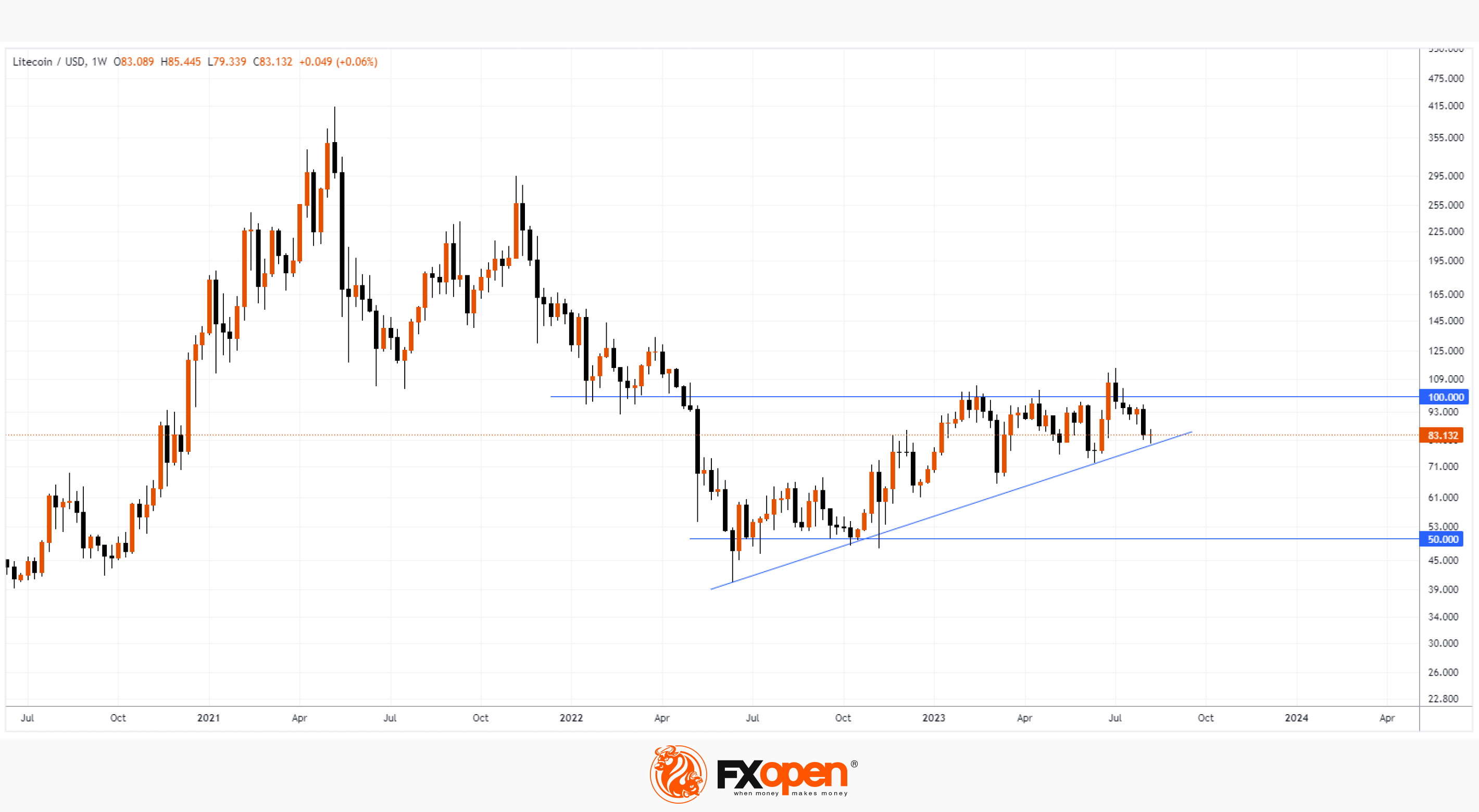FXOpen

On Wednesday, August 2, the planned halving took place in the Litecoin network. Now the reward of miners for each mined block has decreased by 2 times from 12.5 LTC to 6.25 LTC. Theoretically, this should make the cryptocurrency more scarce.
On the eve of the halving, experts were bullish. Thus, financier David Cox voiced a forecast about a possible increase in LTC to USD 189.2. Analyst Michaël van de Poppe provided a bolder upside scenario to USD 200. Also positive statements were made by the creator of the Litecoin project Charlie Lee. However, in fact, we see that the LTC/USD rate fell after the halving.

According to the technical analysis of the LTC/USD chart on a weekly period:
→ The “round” level of USD 100 looks like an important resistance. In 2022, it acted as support, but in 2023 it proved to be able to keep the price of litecoin on the back of a general rally in the cryptocurrency market and the positive associated with halving.
→ The price is near an important support (shown in blue) that has been in effect since mid-2022. The price shows no signs of a bounce, which calls into question the strength of demand and increases the likelihood of a bearish breakout.
→ The USD 50 level looks like a major support, because it kept Litecoin from falling in the second half of 2022, when the same bitcoin was making new lows amid the collapse of the FTX exchange.
A breakdown of the narrowing triangle that forms the blue support line and the psychological level of USD 100 per coin can lead to a significant trend.
FXOpen offers the world's most popular cryptocurrency CFDs*, including Bitcoin and Ethereum. Floating spreads, 1:2 leverage — at your service. Open your trading account now or learn more about crypto CFD trading with FXOpen.
*At FXOpen UK and FXOpen AU, Cryptocurrency CFDs are only available for trading by those clients categorised as Professional clients under FCA Rules and Professional clients under ASIC Rules respectively. They are not available for trading by Retail clients.
This article represents the opinion of the Companies operating under the FXOpen brand only. It is not to be construed as an offer, solicitation, or recommendation with respect to products and services provided by the Companies operating under the FXOpen brand, nor is it to be considered financial advice.
Stay ahead of the market!
Subscribe now to our mailing list and receive the latest market news and insights delivered directly to your inbox.








